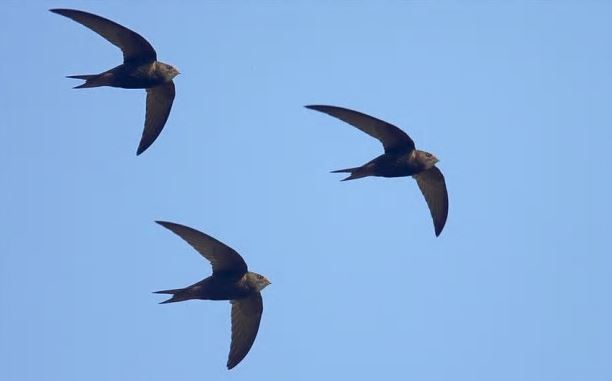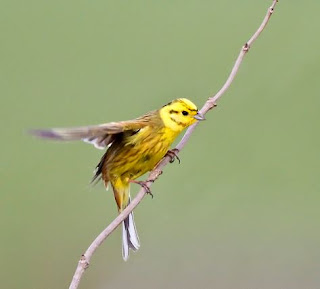Hope against history: Silent Spring or Dawn Chorus?
Days after a gorse fire was finally extinguished by the combined forces of the Fire Service, Army and local volunteers, the scale of the destruction is still being assessed. Passing comment on the initial results as to the extent of damage done, Minister for Gaeltacht Affairs and Natural Resources Seán Kyne said;
“The fire at Cloosh Valley, in particular, is one of the most serious and largest ever to occur in Ireland. Thousands of acres of forestry and bogland have been destroyed with terrible consequences for wildlife. Of even greater concern are the many homes, businesses and communities that have been put at serious risk.”
The fire was started illegally by someone burning gorse. But the dry weather and windy conditions created the perfect environment for the fire to quickly to get out of hand.
Media coverage of the story moved just as fast to cover the event with incredible shots of forests engulfed in flames, large plumes of smoke rising so high they were visible from space.
Residents in the area came under threat, with some evacuated from their homes as a precaution. But Irelands changeable weather was to relieve such concerns as a heavy fall of rain finally quenched the fires that successfully burnt for 6 days.
As already mentioned, an investigation is currently under way to find out the extent of the damage done in the area.
But some conclusions can already me made as to how our birds have fared, with Oonagh Duggan of BirdWatch Ireland claiming they could be “severe”;
“The impacts on birds which will have begun breeding in March, April and May include the burning of nests, eggs and chicks, the destruction of habitat which birds forage in to feed themselves and their chicks.”
I could not help but consider this destroyed environment at our branches National Dawn Chorus, held in Dalgan Park, Navan, this year. As the first birds awoke and called out to others, I wondered if any bird would rise in Cloosh Valley. Would they rise, what would their call announce!? Calling as birds do at this time, to reclaim their territory, to announce they have survived the night. What calls would the remaining birds of Cloosh Valley make? What territory was left for them to reclaim?
What of the local residents affected, who, aside from damaged property, would they endure a silent spring this year too? How would they adapt to their new environments, forever changed, from something so familiar to a dark burnt amber pervading a once vibrant colourful landscape?
“The impacts on birds which will have begun breeding in March, April and May include the burning of nests, eggs and chicks, the destruction of habitat which birds forage in to feed themselves and their chicks.”
I could not help but consider this destroyed environment at our branches National Dawn Chorus, held in Dalgan Park, Navan, this year. As the first birds awoke and called out to others, I wondered if any bird would rise in Cloosh Valley. Would they rise, what would their call announce!? Calling as birds do at this time, to reclaim their territory, to announce they have survived the night. What calls would the remaining birds of Cloosh Valley make? What territory was left for them to reclaim?
What of the local residents affected, who, aside from damaged property, would they endure a silent spring this year too? How would they adapt to their new environments, forever changed, from something so familiar to a dark burnt amber pervading a once vibrant colourful landscape?
Devastating as these events are they often bring a welcome focus on the destruction of our wildlife and the need for its protection and conservation.
Such habitat destruction need not be so dramatic as the fires in the Cloosh Valley either.
Such habitat destruction need not be so dramatic as the fires in the Cloosh Valley either.
Coming to the end of our Dawn Chorus walk, we spotted a single Yellowhammer perched on a hedgerow between a motorway and a recently cut field for silage. This red-listed birds numbers have dropped significantly over the last few years due to habitat loss from such rapidly changing farming
practices.
Although doing well in Meath, evident too at this sighting, was the threat posed to it. The margin between the hedgerow and the road providing more typical Yellowhammer habitat than the margins on the side of the silage field.
practices.
Although doing well in Meath, evident too at this sighting, was the threat posed to it. The margin between the hedgerow and the road providing more typical Yellowhammer habitat than the margins on the side of the silage field.
Upon concluding our Dawn Chorus 2017, two Swifts flew overhead. Recently arrived from Africa. This bird is under pressure from similar habitat loss.
Tired and cold as I was at that point I also felt inspired too by the resilience of this bird, of nature in general, to events outside of its control, to persist in the face of such terrible odds.
Rachel Carson warned in her book Silent Spring, the cost of taking nature for granted. That such indifference would lead to a world where our springs would no longer be filled with the chorus of bird calls but instead a deadening silence.
Maybe the wreckage of Cloosh Valley can serve as a reminder for all to consider their environment and how easily it can be destroyed. How diverse and delicate that ecosystem is. How a Dawn Chorus can become a Silent Spring.
Birdwatch Ireland Meaths next outing is a 'Walk with Brian Caffrey of Birdwatch Ireland - A walk with Brian Caffrey to identify bird songs along the river Boyne and swift nest sites in Trim
Tuesday 30th of May @7.30pm
Tired and cold as I was at that point I also felt inspired too by the resilience of this bird, of nature in general, to events outside of its control, to persist in the face of such terrible odds.
Rachel Carson warned in her book Silent Spring, the cost of taking nature for granted. That such indifference would lead to a world where our springs would no longer be filled with the chorus of bird calls but instead a deadening silence.
Maybe the wreckage of Cloosh Valley can serve as a reminder for all to consider their environment and how easily it can be destroyed. How diverse and delicate that ecosystem is. How a Dawn Chorus can become a Silent Spring.
Birdwatch Ireland Meaths next outing is a 'Walk with Brian Caffrey of Birdwatch Ireland - A walk with Brian Caffrey to identify bird songs along the river Boyne and swift nest sites in Trim
Tuesday 30th of May @7.30pm
Meet at the car park in front of the OPW headquarters, Trim.
All Welcome
UPDATE: The dreaded Heritage Bill comes bill comes before the Dail for debate on Wed - 24th. Get in contact with your local councilor to appose these measures. Find out more email: birdwatchirelandmeath@gmail.com



Comments
Post a Comment